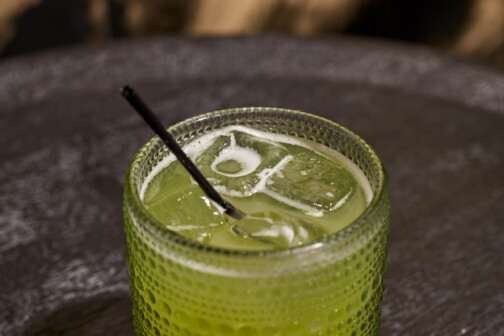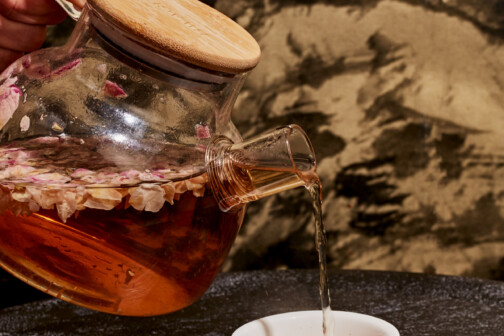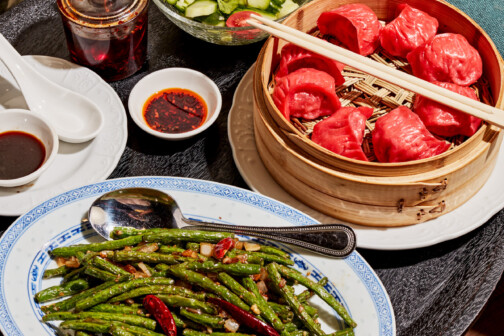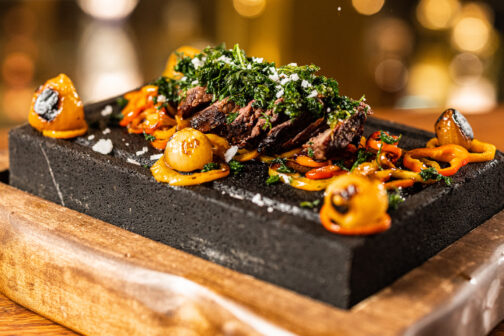From June 2023

For years, Dallas’ food lovers have repeated variations on the same complaint. For good Chinese food, you need to head to the suburbs. Every once in a while, a restaurant will break the curse, most notably Royal China and East Dallas’ Hello Dumpling. But even devoted fans often qualify their praise. “It’s pretty good,” they might say, and then add, “considering I didn’t have to drive to Plano.”
There are historical reasons for this landscape: the geographical concentrations of North Texas’ immigrant communities, the unequal economic opportunities available to different types of restaurateurs, the high-stakes real estate games outsiders don’t know how to play.
But the trend may be reversing itself. Just look at Lowest Greenville, where the hottest new restaurant on the block is a beloved, family-owned Chinese spot that started in Irving. Now we don’t have to make the drive. Fortune House, long one of the suburbs’ biggest dining draws, has come to Dallas.
The original Fortune House experience was typical of small-budget suburban restaurants, with remarkable regional specialties served in an unpretentious environment. On Greenville, almost everything is the same as it is in Irving, where the original location remains open. The food still has the same great strengths and occasional weaknesses. The waitstaff is still busy but endearing. Just three changes stand out: the stylish dining room, the online reservation platform, and the expanded cocktail program. If you’re a fan of the original Fortune House, you’ll be glad so little has changed; if you are a first-timer, you’ll get to meet the specialty dishes that have charmed Irving for years.
Unlike the stark white of the original space, the Greenville dining room is dressed up to look like a narrow urban street in a Chinese city, with windows into the bar, complete with shutters; a Fortune House sign in Mandarin; a long awning over an imaginary porch—even a second-floor balcony.
Since its specialty is soup dumplings, Fortune House employs the architectural design element made standard by celebrated megachain Din Tai Fung: a glass-walled kitchen that allows customers to see the dumpling-making happen. If you head to the restrooms, you can stop along the way to watch cooks stretch dough, chop it into portions, tease it out into wrappers, and finish the filled products with many-pleated tops.
First-timers will quickly learn how to order here. Start with the little page tucked into the center of the menu, which features dumplings, buns, and appetizers. Order as much from that section as your table can handle. Then, maybe, look at a few mains and veggies.
Soup dumplings have been this restaurant’s trademark since it opened in 2015, and they’re not changing their signature dish now. The pork soup dumplings still have thin dough wrappers with exquisite folds, and they still contain a generous quantity of pork broth. Take a careful nibble from the side and slurp broth out, or pop a whole dumpling into your mouth and enjoy the literal burst of flavor. These are probably still the best soup dumplings in the Dallas area, and, because they’re delicately flavored, you can eat plenty of them without tiring of the magic.
The other standouts are pan-fried pork buns, which are steamed through and then fried only on one side to create soft tops and crispy bottoms. Additional highlights include salt-and-pepper seafood, with crisp battering and a topping scoop of grilled onions and peppers, and terrific shrimp dumplings encased in a bright pink dough. If you can stop to look at the scallion pancakes before devouring them, you’ll marvel at the labor of folding six to eight thin layers of batter into a single, crisp pancake.
These are probably still the best soup dumplings in the Dallas area.
Many of the restaurant’s “spicy” items are not that spicy. Cucumber salad, for example, sets a nutty, savory chile oil against seeded English cucumber. It’s a wonderfully refreshing snack with an edge. Spicy string beans aren’t too hot, either. Even spicy wontons don’t have the bright red chile oil you’ll find at Plano’s Wu Wei Din. Instead, the hot pepper is tempered by sesame.
There is good reason for the tamed heat. Shanghai, the city whose flavors Fortune House presents in Dallas, is not known for spicy-hot cooking. Unlike regions such as Hunan and Szechuan, where the peppers are as strong as the Silk Road spice trade history is long, the native food of Shanghai is more delicate, sometimes to a fault.
Beyond Shanghai’s beloved specialties—soup dumplings, scallion-poached chicken, red-braised pork belly—some sauces can be sweet and mild-mannered. Even native cooks get defensive, such as Betty Liu in her book My Shanghai. “To call it sweet is too simple and doesn’t even get close to the heart of the cuisine,” she writes. “Yet that is how Shanghainese food is commonly labeled.” Later she suggests the phrase “light and refreshing” as an alternative to “sweet.”
At its best, Fortune House sticks close to tradition and offers specialties that are, well, light and refreshing. At other times, sweetness can take over a dish.
Shanghai scallion noodles make a light side, suitable for sharing. They’re dressed with a subtle scallion oil, then topped with a small handful of shrimp and cooked scallion strips. Next up on the sweet ladder is hong shao rou, or red-braised pork belly, with cubes of well-rendered meat slow-cooked in a pot with dark and light soy sauces and spices. From the pork fat and cooking liquids, a sticky sauce, almost like a glaze, forms. At Fortune House, knots of tofu are added late in the cooking so they don’t get too soft.
By the time we get to the lion’s head meatballs—enormous, shaggy, loosely packed pork meatballs braised with bok choy—the sauces have begun to get cloying. The meatballs themselves are excellent, but the sauce coating them is sweeter even than the sauce that comes on the honey beef, which has “honey” in its name.
Fortune House happily strays from Shanghai’s specialties. The city has more residents than New York City or Mexico City, which gives the kitchen license to serve Szechuan boiling beef, Taiwanese beef noodle soup, more northerly zha jiang mian, Singapore noodles, and even Americanized dishes such as General Tso’s chicken.
If you’re not sure which main courses are traditional, one rule of thumb is that beef is not a staple in Shanghai cooking. This part of China is sometimes nicknamed the Land of Fish and Rice. China’s per capita beef consumption is one-sixth that of the United States’, and the biggest beef eaters in the country reside in its far west, including Tibet. Liu’s book contains just one beef recipe.
Honey beef is surprisingly balanced and comes with small, steamed bao formed in the shape of birds, so you can make tiny sandwiches. Of the other Chinese-American plates, crab Rangoon is notable for the fact that it contains real crab.
The one problem that stood out after my three visits to the new Fortune House was that each visit was different. One night, my party of six puzzled over three printings of the menu, all with various items added or missing. When I returned later that week, still more items had disappeared from the printed menu. Visits began with a negotiation over which dishes had sold out; one night, seven of nine teas were unavailable. After three visits, I still haven’t gotten to try the chive pockets.
Some week-to-week changes were good. Pan-fried pork buns got better on each trip. One day, the dough was rather soft, and the buns were topped with scallions only; more recently, the fried sides were crispier, and the toppings also included black and white sesame seeds.
Other hiccups will likely disappear with time and experience. For its Greenville location, the restaurant has dramatically expanded its cocktail offerings, highlighting Asian ingredients such as Chinese five-spice, Midori, green tea, and black sesame. But one of my friends ordered the Popped Up in Dallas—which comes with popping boba nestled under the ice in the whiskey-based drink—and didn’t get to try the boba, because the drink came with a traditional straw.
Fortune House will learn from its early mistakes. And improvements are ongoing, like the recent arrival of comfy custom-designed booths. The restaurant will earn a lot of patience from Dallas diners so long as its soup dumplings, pork buns, and scallion pancakes remain reliably great. I know I’ll be popping in again soon, looking for those chive pockets.
This story originally appeared in the June issue of D Magazine with the headline, “Take a Bao.” Write to [email protected].
Get the SideDish Newsletter
Author












